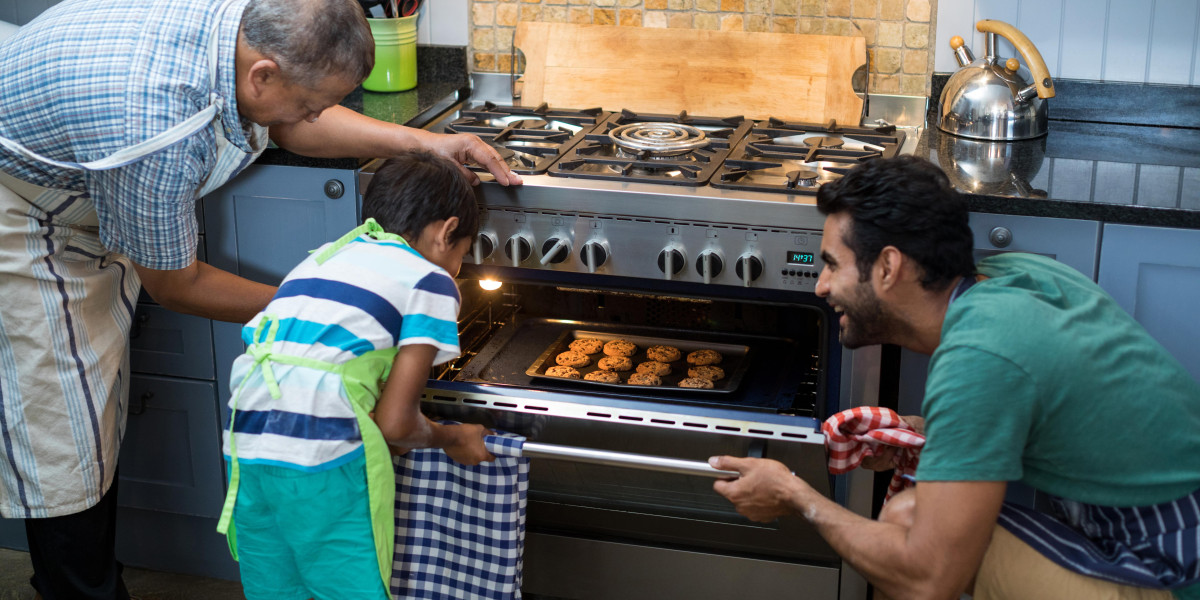The Ultimate Guide to Built-in Ovens: Enhancing Your Kitchen Experience
Built-in ovens have actually become a popular choice in contemporary cooking areas, offering a blend of performance, design, and convenience. Unlike standard freestanding ovens, built-in ovens are integrated flawlessly into cabinets, providing a streamlined look that can improve the visual appeal of any inbuilt kitchen appliances. This article explores the different types of built-in ovens, their benefits, installation considerations, and upkeep ideas.
Understanding Built-in Ovens
Built-in ovens are designed to be installed directly into kitchen cabinetry, permitting a more personalized kitchen setup. They normally are available in two primary types: single and double ovens.
Kinds Of Built-in Ovens
Single Ovens: These units use one cooking compartment, perfect for smaller sized kitchen areas or homes where cooking needs are modest.
Double Ovens: As the name recommends, these units include two different cooking compartments, allowing users to cook multiple dishes at different temperatures at the same time. This is particularly beneficial for cookology 60cm Large Built under Double oven families or those who often entertain visitors.
Steam Ovens: These ovens cook food utilizing steam, which can assist maintain moisture and nutrients. Steam ovens are gaining appeal due to their health benefits.
Mix Ovens: These versatile appliances integrate the functions of a regular oven and a microwave, making them ideal for fast cooking and reheating.
Key Features to Look For
When thinking about a built-in oven, there are a number of functions that can boost your cooking experience:
Smart Technology: Many modern built-in ovens come geared up with clever innovation, permitting users to control their oven remotely through mobile phone apps. Features consist of preheating the Top-Quality SIA 60cm Stainless Steel Electric Oven, changing cooking times, and keeping an eye on cooking progress.
Self-Cleaning Functions: Built-in ovens with self-cleaning capabilities can conserve effort and time in kitchen upkeep.
Convection Heating: This function distributes hot air for even cooking, making it perfect for baking.
Safety Features: Look for models equipped with features like cool-to-the-touch oven doors and automated shut-off choices for added security.
Benefits of Built-in Ovens
Visual Appeal: Built-in ovens provide a sleek and modern-day look that can improve the overall style of a kitchen. They can be included into cabinetry, making them less intrusive than freestanding models.
Area Efficiency: Built-in built oven ovens optimize kitchen space, especially in smaller sized kitchens where every inch counts. They can be put at eye level, making it simpler to keep an eye on cooking without flexing down.
Boosted Functionality: With their advanced functions, built-in ovens offer enhanced cooking experiences and increased functionality compared to traditional ovens.
Installation Considerations
Setting up a built-in oven needs mindful preparation and factor to consider. Here are some essential points to bear in mind:
Space Requirements: Ensure that the chosen oven fits comfortably into the available cabinet area. Procedure the measurements accurately, representing ventilation and clearance requirements.
Electrical Requirements: Built-in ovens typically require a dedicated electrical circuit. Seek advice from an electrical expert for correct installation.
Ventilation: Proper ventilation is important for ideal oven efficiency. Validate that the setup area has adequate ventilation to prevent overheating and ensure safe operation.
Expert Installation: While DIY setup might appear appealing, enlisting the help of an expert can guarantee that the oven is installed correctly and securely.
Setup Steps
| Setup Step | Description |
|---|---|
| Step 1: Measure | Procedure the cabinet opening for your oven. |
| Action 2: Prepare | Prepare the electrical outlet and ventilation choices. |
| Step 3: Connect | Connect the oven to power, guaranteeing all security procedures are abided by. |
| Step 4: Secure | Secure the oven within the cabinets, utilizing proper screws and brackets. |
| Step 5: Test | Run a test to guarantee the oven is working properly. |
Upkeep Tips
Routine upkeep can extend the life of your built-in oven and ensure optimum efficiency. Here are some maintenance ideas:
Clean Regularly: Wipe down the oven outside and clean the interior routinely. Use self-cleaning functions where offered.
Inspect Seals: Ensure that door seals are undamaged to maintain effectiveness and cooking efficiency.

Screen Performance: Pay attention to how your oven functions-- if you observe irregular cooking or uncommon noises, it might require professional servicing.
Follow Manufacturer Guidelines: Always adhere to the upkeep guidelines offered by the manufacturer. This can help avoid problems and ensure that guarantees remain valid.
FAQs about Built-in Ovens
What is the distinction in between a built-in oven and a freestanding oven?
- Built-in ovens are integrated into kitchen cabinetry, providing a structured appearance, while freestanding ovens are standalone appliances that can be put throughout the kitchen.
Do built-in ovens need more maintenance than routine ovens?
- Not necessarily. Maintenance depends upon use and cleansing routines more than the type of oven. Routine care is necessary for all ovens.
Can I set up a built-in oven myself?
- While it is possible to install a built-in oven yourself, it is suggested to hire an expert to make sure safe and precise installation, specifically relating to electrical requirements.
What are the average costs of built-in ovens?
- Costs can vary considerably based upon brand name, functions, and specifications. Standard designs may start around ₤ 800, while high-end designs can exceed ₤ 3,000.
Are built-in ovens energy-efficient?
- Lots of contemporary built-in ovens are designed to be energy-efficient. Try to find designs with an ENERGY STAR certification for the best efficiency.
In conclusion, built-in ovens are an excellent addition to any modern-day kitchen, combining aesthetic appeals with performance. By understanding the different kinds of built-in ovens, their features, and the associated setup and maintenance requirements, property owners can make an informed decision that enhances their cooking experience and overall kitchen design. As cooking technology evolves, built-in ovens are most likely to play an integral role in the future of home kitchen areas, ensuring scrumptious meals are prepared with ease and convenience.



